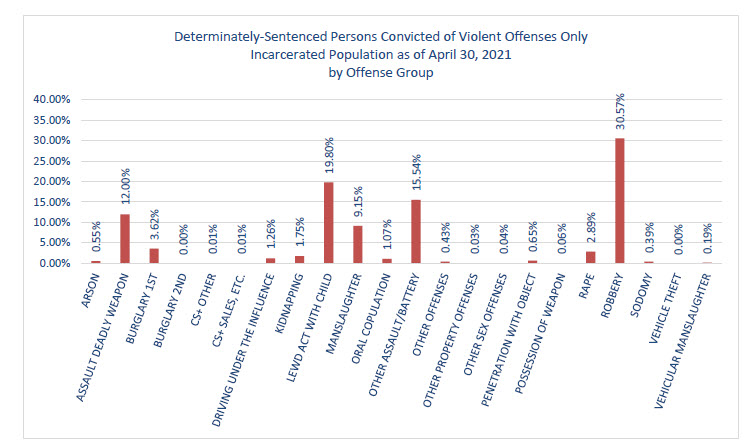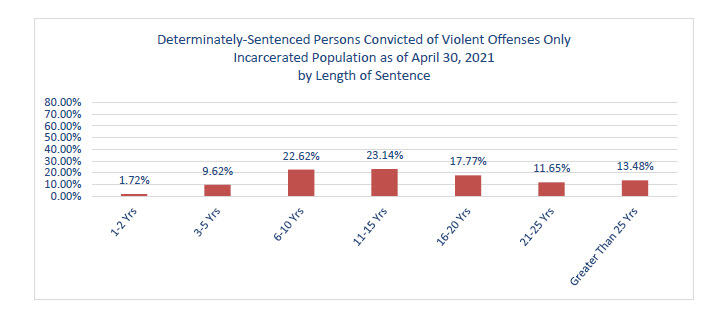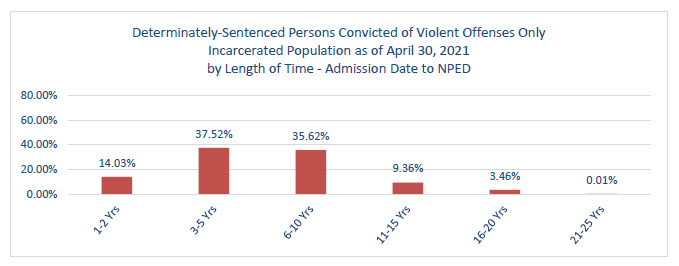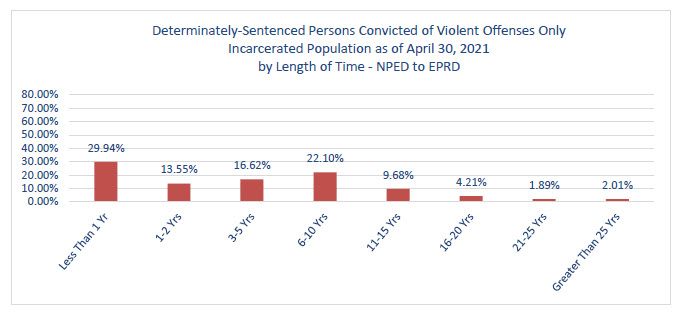The following data was requested by the Committee on Revision of the Penal Code. Specifically, the committee requested information concerning the type of commitment offenses, total length of sentence, length of time between admission date and NPED, and length of time between NPED and Earliest Possible Release Date (EPRD)30 for the following determinately-sentenced populations:
- person’s convicted of nonviolent offenses only;
- person’s conviction of nonviolent offenses and at least one violent felony; and,
- person’s convicted of only violent offenses.
Persons Convicted of Nonviolent Offenses Only
The data below is based on 19,566 incarcerated persons serving sentences for nonviolent felonies only as of April 30, 2021. This population is currently eligible for referral to the Board for parole consideration under Proposition 57 if they have at least six months remaining to serve and they are not eligible for the Board’s parole hearing process. Please note that some offenses listed are a violent felony under Penal Code section 667.5, subdivision (c) today, but they were not at the time the crime was committed so they are considered nonviolent for purposes of the Proposition 57 nonviolent parole review process (i.e., robbery, kidnapping, etc.) Also, many incarcerated persons have multiple convictions and sentencing enhancements. For purposes of this data, only the person’s controlling offense is listed, which is usually the most serious offense; it is the offense that will keep them in prison the longest, excluding sentencing enhancements.
30 An EPRD is the date a determinately-sentenced person will be released “on the natural” based on the sentence imposed by the court, less any applicable credits (i.e., pre-sentence, good conduct, educational milestone, rehabilitative achievement, etc.)
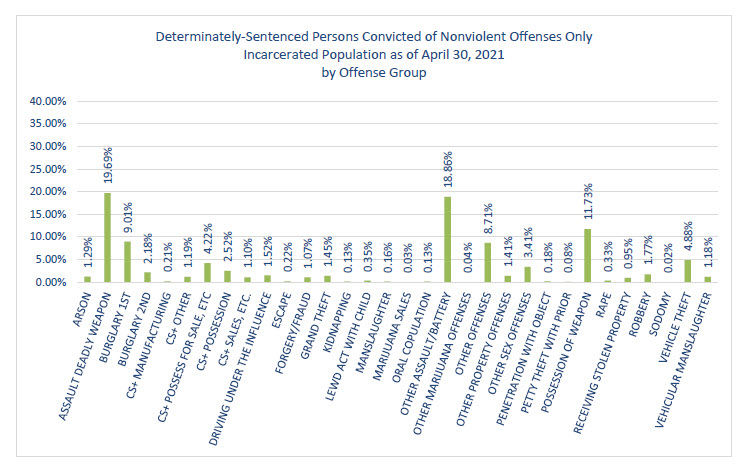
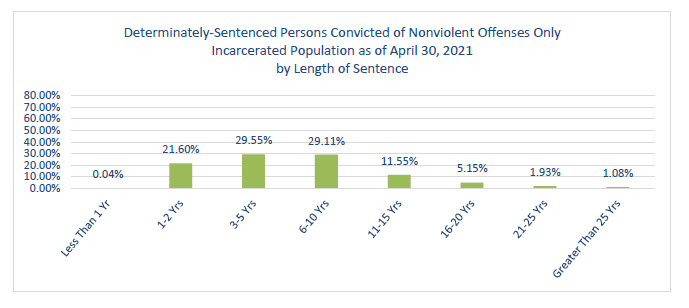
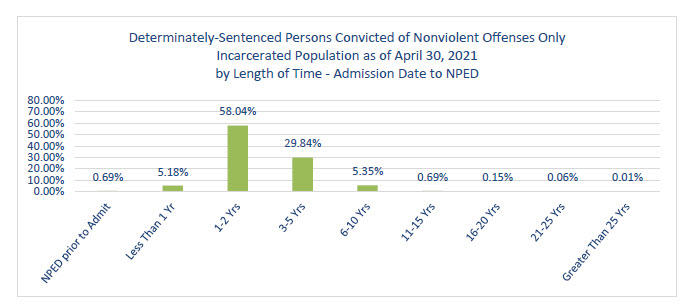
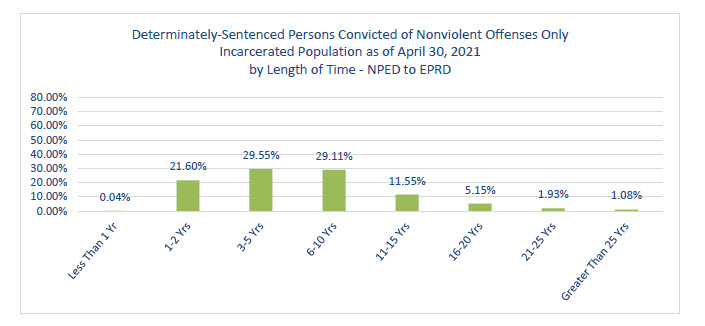
Persons Convicted of both Nonviolent and Violent Offenses
The data below is based on 18,565 incarcerated persons serving sentences for both nonviolent and violent felonies as of April 30, 2021. This population is not eligible for parole consideration under Proposition 57. The NPEDs for this population are estimates based on available electronic sentencing information.
Also, many incarcerated persons have multiple convictions and sentencing enhancements. For purposes of this data, only the person’s controlling offense is listed, which is usually the most serious offense; it is the offense that will keep them in prison the longest, excluding sentencing enhancements. As a result, a person’s controlling offense may be nonviolent but they may also have a shorter sentence for a violent felony conviction. In those cases, only the nonviolent offense would be included in the chart below.
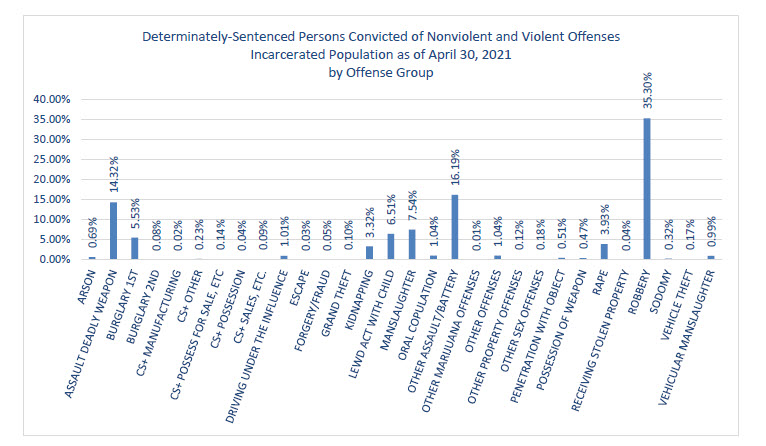
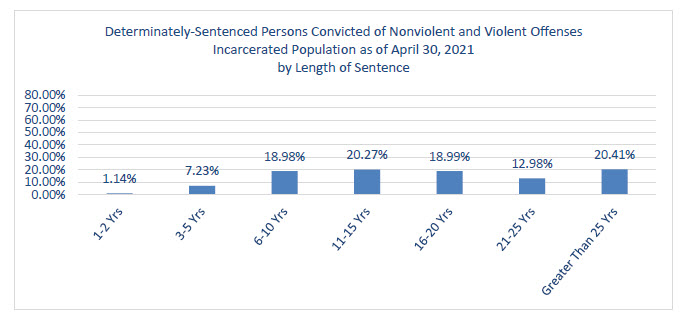
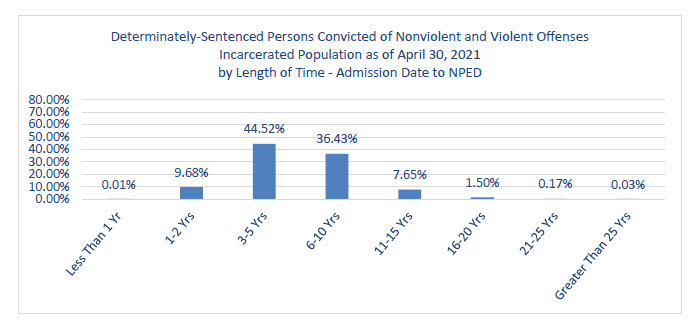
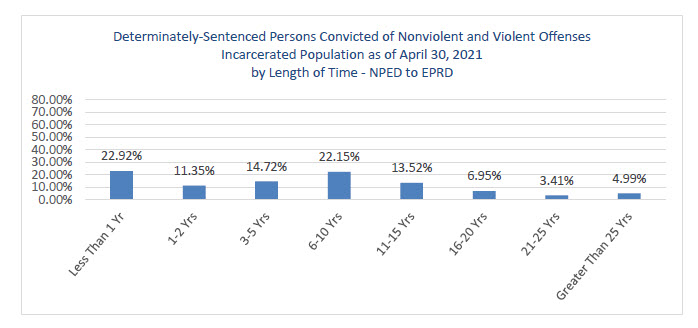
Persons Convicted of Violent Offenses Only
The data below is based on 23,478 incarcerated persons serving determinate sentences for violent offenses only as of April 30, 2021. This population is not eligible for parole consideration under Proposition 57.
The NPEDs for this population are estimates based on available electronic sentencing information. Also, many incarcerated persons have multiple convictions and sentencing enhancements. For purposes of this data, only the person’s controlling offense is listed, which is usually the most serious offense; it is the offense that will keep them in prison the longest, excluding sentencing enhancements.
Lastly, a person who is convicted of a nonviolent offense with a violent sentencing enhancement is considered to be sentenced to a violent felony. In essence, the violent felony enhancement makes the underlying offense a violent felony under Penal Code section 667.5, subdivision (c). As a result, some crimes listed below appear to be nonviolent, but because of a violent sentencing enhancement, they are included here because they are the person’s controlling offense – the term that will keep the person in prison the longest, excluding sentencing enhancements.
